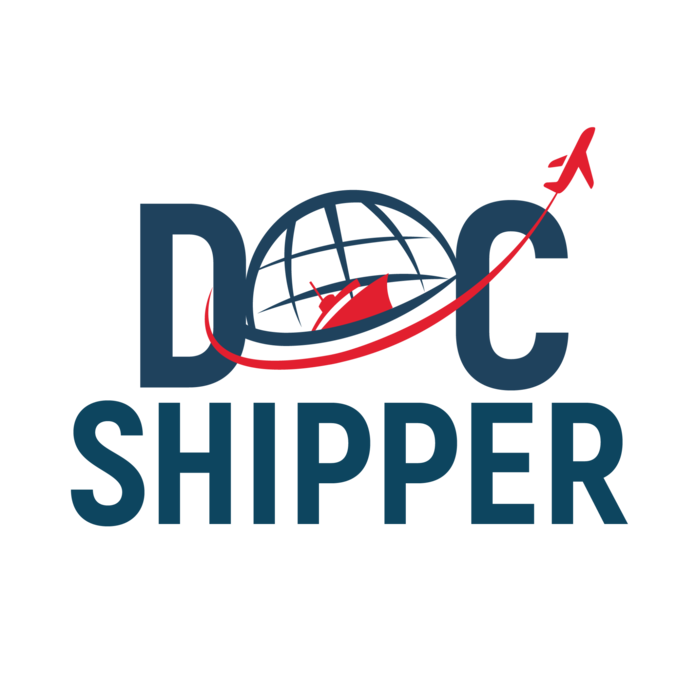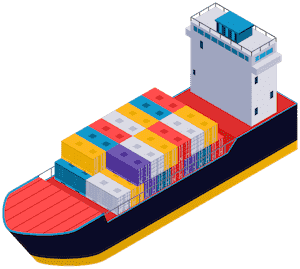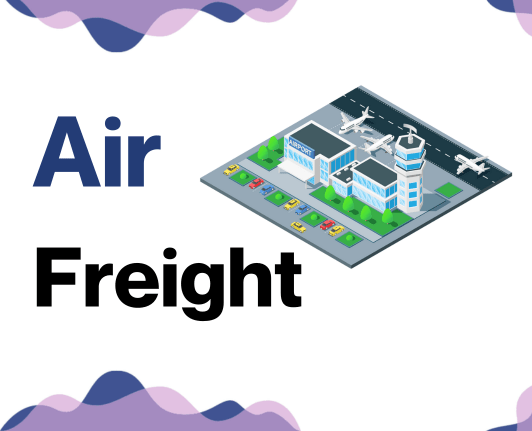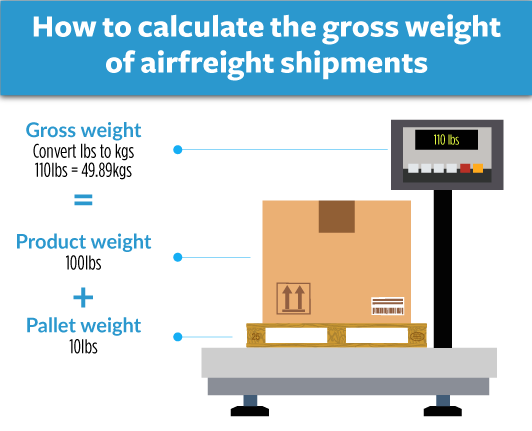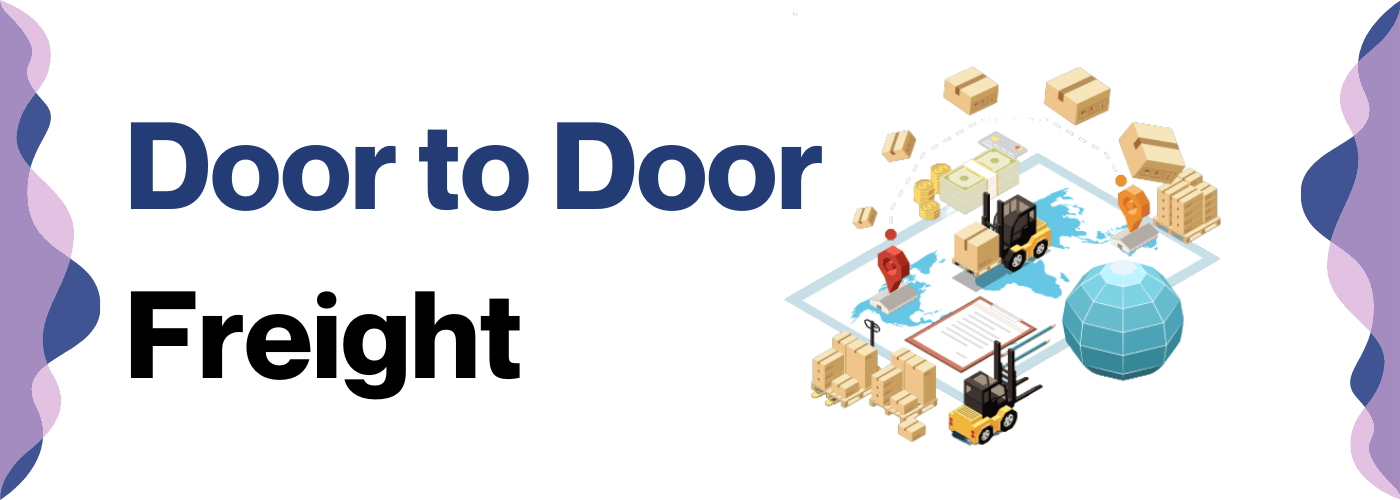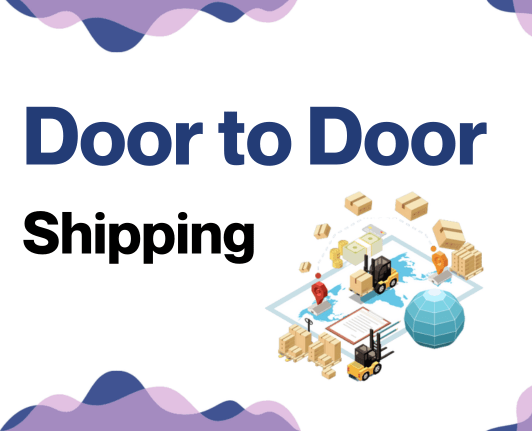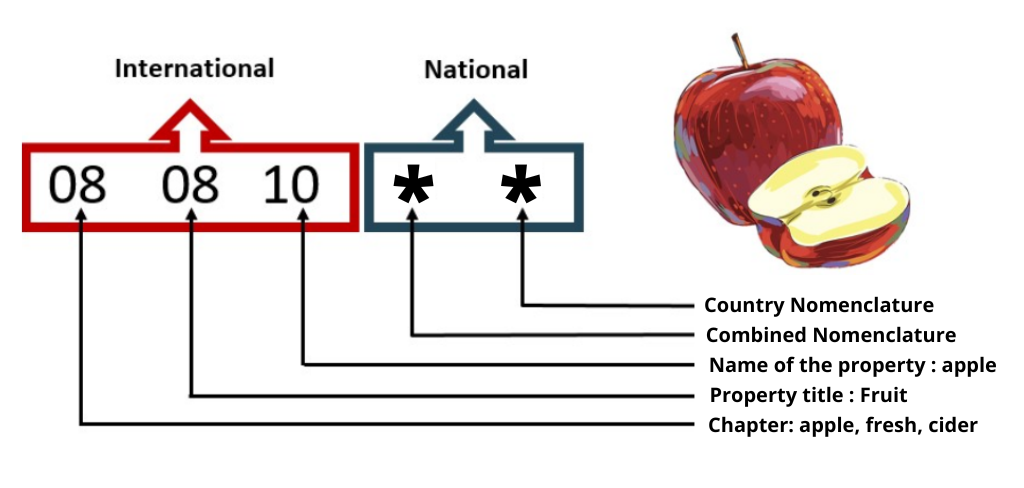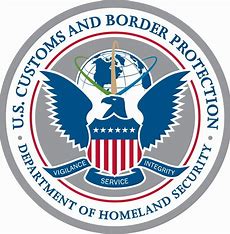Why did the cargo ship become friends with a port? Because it never wanted to feel lost at sea! But seriously, the process of shipping goods between the US and China is filled with its own complexities - ranging from understanding shipping rates and transit times to deciphering murky customs regulations. This guide is here to clear the waters. It dives deep into multiple freight options - air, sea, road, or rail, elucidates the process of customs clearance, unpacks the mystery behind duties and taxes, and provides advice tailor-made for businesses. If the process still feels overwhelming, let DocShipper handle it for you! As your companions in international freight forwarding, we turn these complex hurdles into seamless success for your business.
Table of Contents
ToggleWhich are the different modes of transportation between US and China?
Shifting your goods between the US and China can be comparable to a cross-country road trip: You need to choose the right vehicle for the journey. Despite the lengthy voyage traversing the Pacific, ocean freight become a go-to option, suiting businesses that aren't time-sensitive. On the other hand, air freight, akin to hopping on a plane, offers a quicker solution, perfect for urgent or high-value items. Making an informed decision on the transport method largely depends on elements such as cost, speed, and the nature of your goods, ensuring a smooth voyage from the Great Wall to the Grand Canyon.
How can DocShipper help?
Looking to ship goods between the US and China? DocShipper's experts take complexity out of the equation. We manage every step, from transport organization to customs clearance. Get quick, reliable solutions to your shipping needs. Dial into a free consultation today or ask for a free quote, responded within 24 hours. Your seamless shipping experience is just a call away.
DocShipper Tip: Sea freight might be the best solution for you if:
- You are shipping large volumes or bulky items, as sea freight offers the most space at a cost-effective rate.
- Your cargo doesn't have an urgent deadline, as sea freight typically has longer transit times compared to air or rail.
- Your shipping routes are between major ports, allowing you to leverage the extensive global network of sea shipping lanes.
Sea freight between US and China
The business of sea freight between the US and China paints a vibrant picture of international trade, threaded through bustling cargo ports like Shanghai and Los Angeles, bridging mighty industries. For shippers handling high-volume goods, it's the wallet-friendly workhorse, working tirelessly, albeit at a slower pace than its air and rail counterparts.
But steering this shipping route isn't always smooth sailing. Missteps are common and can be costly, tangling you up in red tape and hampering your delivery speeds. It's akin to going through a maze blindfolded – missing the direct route, getting stuck at dead ends, and frequently running into walls! Based on real-life experiences, companies often stumble over complex customs procedures, inadequate packing, and underestimated costs – turning the waters rough.
In this section, we toss the 'sea freight survival guide' into your hands. Detailed insights, expert tips and tried-and-true best practices, tailored to make your journey through the maze quicker, straighter, and free of bumps! Sorting through the knotty parts of shipping, we chart out a route map that holds the promise of clarity and simplicity. So, ready to unfurl the sails?
Main shipping ports in US
Port of Los Angeles:
Located in San Pedro Bay, the Port of Los Angeles is essential for trade between the US, Asia, and the Pacific Rim. With a shipping volume of 9.2 million TEU in 2020, it's one of the busiest ports in the United States.
Key Trading Partners and Strategic Importance: The Port of Los Angeles has strong ties with key partners such as China, Japan, Vietnam, South Korea, and Taiwan. Its strategic importance is compounded by its proximity to major U.S. markets and its advanced terminal operations.
Context for Businesses: If you're looking to expand operations within Asian markets, the Port of Los Angeles might be vital for your shipping strategy due to its strong links with Asian countries and its capacity to handle high volumes.
Port of Long Beach:
Just a stone's-throw away from the Port of LA lies the Port of Long Beach. Situated in Southern California, it is a dominant gateway for Asia–U.S. trade, boasting a shipping volume of over 8.1 million TEU in 2020.
Key Trading Partners and Strategic Importance: The Port of Long Beach's primary trading partners include China, South Korea, Japan, Vietnam, and Taiwan. Its location near logistics and warehousing hubs increases its strategic value.
Context for Businesses: For businesses trying to penetrate the Asian markets, the Port of Long Beach can provide logistical advantages due to its location and its powerful network of Atlantic, Pacific, and Gulf Coast ports.
Port of New York and New Jersey:
Located on the East Coast, the Port of New York and New Jersey is the busiest port on the Eastern Seaboard, hosting a shipping volume of 7.6 million TEU in 2020.
Key Trading Partners and Strategic Importance: Trading partners include China, India, Germany, Italy, and Belgium. It serves as a vital link connecting the US to European and Asian markets.
Context for Businesses: If you're targeting European and fast-growing Indian markets, the Port of New York and New Jersey has to be a consideration for its strategic location and strong ties with these regions.
Port of Savannah:
Located in Georgia, the Port of Savannah is an important conduit for exports, with a shipping volume of 4.6 million TEU in 2020.
Key Trading Partners and Strategic Importance: China, India, Germany, Vietnam, and South Korea are among its key trading partners. The port's strategic importance comes from being the fastest growing and fourth largest port in the nation, particularly for retail cargoes.
Context for Businesses: If your growth plans involve retail exports, the Port of Savannah should be on your radar due to its dedicated retail logistics services and links to growing Asian markets.
Port of Houston: Located in Texas, the Port of Houston is vital for oil and petrochemical products, with a shipping volume of 2.99 million TEU in 2020.
Key Trading Partners and Strategic Importance: Mexico, Brazil, China, the Netherlands, and South Korea are construction materials and petrochemical industry partners. Proximity to the oil and gas industry gives it unique strategic importance.
Context for Businesses: If you're in the petrochemical industry, the Port of Houston is hard to beat for its infrastructure and proximity to key industry players.
Port of Seattle:
Located in Washington state, the Port of Seattle is crucial for trade with Asia, with a shipping volume of 3.7 million TEU in 2020.
Key Trading Partners and Strategic Importance: Its key partners include China, Japan, South Korea, Taiwan, and Vietnam. The port's strategic importance lies in its access to the Alaskan market and Pacific Northwest.
Context for Businesses: If you're looking to expand to Asian and Alaskan markets, the Port of Seattle can become an integral part of your logistics due to its favorable location.
Main shipping ports in China
Port of Shanghai:
Location and Volume: Located along the East China Sea, the Port of Shanghai ranks as the busiest port in the world in terms of cargo tonnage, boasting a staggering shipping volume of over 40 million TEUs annually.
Key Trading Partners and Strategic Importance: This port is a major hub for Asia, Europe, and the Americas. It plays a key role in the Belt and Road Initiative, serving as a critical connection point for eastern and western trading channels.
Context for Businesses: If you're looking to penetrate the Asian market or require a transfer point to other parts of the world, the Port of Shanghai's unparalleled volume and wide range of destinations present an excellent opportunity.
Port of Ningbo-Zhoushan:
Location and Volume: Situated in Zhejiang province, the Port of Ningbo-Zhoushan is the world's largest port in terms of cargo volume, moving over 26 million TEUs annually.
Key Trading Partners and Strategic Importance: Trading partners primarily include America, Europe, and other parts of Asia. Renowned for its extensive deep-water facilities, it's a crucial gateway for bulk and oversized cargoes.
Context for Businesses: If you're interested in shipping bulk cargo or have a need for deep-water shipping capabilities, the Port of Ningbo-Zhoushan has the infrastructure and capabilities to cater to these unique requirements.
Port of Shenzhen:
Location and Volume: Found in the southern region of Guangdong Province, the Port of Shenzhen handles about 27 million TEUs yearly, making it one of the largest and busiest ports globally.
Key Trading Partners and Strategic Importance: It's directly connected to 300 ports in 100 countries. As one of China's primary economic hubs, it plays a vital role in South China's economic development.
Context for Businesses: If you're looking at harnessing the growth in South China or looking for a globally connected hub, the Port of Shenzhen provides a convenient and strategically located gateway.
Port of Guangzhou:
Location and Volume: Nestled on the Pearl River, the Port of Guangzhou is the busiest port in South China, with a volume of over 20 million TEUs per year.
Key Trading Partners and Strategic Importance: A significant port for domestic trade and the ASEAN region. It's an essential player in the maritime silk route under the Belt and Road Initiative.
Context for Businesses: If you want to tap into the local Chinese market or extend your supply chain into Southeast Asia, the Port of Guangzhou should certainly be a contender in your logistics approach.
Port of Hong Kong:
Location and Volume: Situated in the South China Sea, the Port of Hong Kong is one of the busiest ports globally, with an annual volume of 19 million TEUs.
Key Trading Partners and Strategic Importance: It acts as a significant hub for transshipments and serves as a gateway to mainland China.
Context for Businesses: For those seeking a reliable transshipment hub or targeting the booming markets of China, the Port of Hong Kong offers a perfect combination of global connections and strategic geographical location.
Port of Qingdao:
Location and Volume: Based in Shandong province, the Port of Qingdao handles over 18 million TEUs annually.
Key Trading Partners and Strategic Importance: Its trading partners are mainly based in Asia, Europe, and the United States. Boasting the deepest seaport in China, it's strategically important for handling large vessels.
Context for Businesses: If your cargoes require deep-water berths due to their size or volume, or if you aim to reach the lucrative markets specifically across Asia and Europe, the Port of Qingdao is a smart consideration for your shipping strategy.
Should I choose FCL or LCL when shipping between US and China?
To ship your goods from US to China, selecting between Full Container Load (FCL) and Less than Container Load (LCL) can greatly affect the cost and delivery time of your shipment. This critical choice, akin to selecting the best route for a long drive, can make your journey smooth or riddled with bumps. This section aims to highlight the differences, benefits, and drawbacks of FCL and LCL, empowering you to make a strategic decision tailored to your business needs that paves the way to a successful, cost-effective shipping venture.
LCL: Less than Container Load
Definition: LCL, or Less than Container Load, refers to shipments that are too small to fill up a full shipping container. These are consolidated with other goods into a single container, and you only pay for the volume your cargo takes up.
When to Use: LCL is a preferred method if your freight volume is low, typically less than 13-15 Cubic Meter (CBM). It offers flexibility as it runs on a regular schedule and doesn't require you to pay for unused container space.
Example: Suppose you're a US-based toy manufacturer shipping 10 CBM of plush toys to a retailer in China. By choosing LCL shipment, you can ride along with other shippers' goods, without waiting till you have enough volume for a full container. This enables both timely delivery and cost effectiveness.
Cost Implications: With LCL freight, the costs are proportional to the volume of the cargo. While it might be more per unit than a Full Container Load, it's typically more cost-effective for smaller shipments because you're not paying for unused space. However, keep in mind that LCL may incur extra charges, like the LCL handling fee, due to the need for deconsolidation at the destination port.
FCL: Full Container Load
Definition: FCL (Full Container Load) shipping is a type of ocean freight where a business books an entire container (20'ft or 40'ft) for their goods only.
When to Use: Opt for FCL shipping when the cargo size exceeds 13/14/15 CBM. High-volume shipping can benefit from cost-efficiency and safety offered in this method. By sealing the container at the origin and maintaining it until it reaches its destination, FCL ensures the safe transit of goods minimizing potential damage risks.
Example: Suppose an electronics manufacturer in the US needs to send 16 CBM of machinery to a factory in China. Here, using an FCL container would be the most cost-effective option because of the cargo volume. Plus, the company would get the assurance that their machinery remains secured within a sealed container during transit, reducing risk.
Cost Implications: FCL shipping quotes are typically less per unit as compared to LCL when dealing with large volume shipments. Even though higher initial outlay for a whole container might seem daunting, cost savings by unit when moving large volumes play a vital role in shaping the economics of FCL.
Unlock hassle-free shipping
Struggling with the choice between consolidation and a full container for your US-China shipping? Make it hassle-free with DocShipper, your trusted freight forwarder. Our ocean freight experts consider essential factors like cargo size, urgency, and budget to ensure optimal solutions for your business shipments. Don't let shipping be a stumbling block for your global operations. Reach out to DocShipper right now for a free estimation and let's sail together towards success.
How long does sea freight take between US and China?
The average transit time for sea freight shipping between the US and China is roughly between 14-30 days. However, specifics like chosen ports, the weight, and nature of the goods shipped can cause this figure to fluctuate. For an accurate, business-specific quote on transit times, it's recommended to engage with a trusted freight forwarder, such as DocShipper.
Below is a tentative table comparing the average transit times among the main freight ports in both countries:
| US Port | China Port | Average Transit Time |
| Los Angeles | Shanghai | 20 |
| Long Beach | Shenzhen | 18 |
| New York | Ningbo | 25 |
| Savannah | Qingdao | 25 |
Note: The times listed are average estimates and specific shipments can differ based on various factors.
How much does it cost to ship a container between US and China?
Determining ocean freight rates between the US and China is more art than science, as rates can greatly vary. While we could suggest a broad ballpark figure per CBM, exact shipping costs hinge on various dynamic factors. The Point of Loading, Point of Destination, your chosen carrier, the commodity being shipped, and the ever-fluctuating market conditions all play their part. Rest assured, our experienced shipping specialists are committed to working with you, quoting uniquely for each scenario, to secure the most competitive and fitting rates for your needs. Going it alone can be daunting, but with us, you're never sailing solo. We're here to navigate these waters with you!
Special transportation services
Out of Gauge (OOG) Container
Definition: An OOG container, or Out of Gauge container, is specialized shipping equipment engineered for cargo that does not fit within the standard shipping container dimensions. This is perfect for Out of Gauge cargo exceeding the standard measurements.
Suitable for: Businesses that need to ship large, irregularly shaped, or oversized goods that won't fit in typical containers.
Examples: Heavy machinery, construction equipment, oversized industrial parts could make good use of OOG containers.
Why it might be the best choice for you: Should your operation require moving extra-tall, wide, or long cargo, such as parts of wind turbines or aircraft wings, the flexibility of OOG containers can ensure your cargo reaches China without the need to dismantle and reconstruct it upon arrival.
Break Bulk
Definition: Break bulk pertains to goods that must be loaded individually rather than in containers. These can include goods of various sizes and shapes, making it a preferred choice when handling loose cargo load.
Suitable for: Shipment of items that are too large or heavy for containers.
Examples: Examples could be windmills, yachts, turbines or construction equipment.
Why it might be the best choice for you: If your US business frequently deals with high-volume or heavy-weight commodities that aren't container-friendly, opting for break bulk shipping to China could streamline your supply chain process.
Dry Bulk
Definition: Dry bulk refers to shipping loose, dry materials without packaging, often piled up and directly placed in the ship's hold.
Suitable for: Businesses working with large quantities of unpackaged goods such as commodities.
Examples: This could include shipping non-perishable commodities like grain, coal, or iron ore.
Why it might be the best choice for you: Should you be in the agriculture, construction, or mining sectors where high volumes of raw goods need to be transported from the US to China, dry bulk shipping can offer an efficient solution.
Roll-on/Roll-off (Ro-Ro)
Definition: Roll-on/Roll-off, or ro-ro vessel, is a shipping method utilized for cargo that rolls on and off the vessel without the need for cranes or forklifts.
Suitable for: Ideal for shipping vehicles or heavy machinery that can move or be moved with wheels.
Examples: Cars, buses, trucks, farming machinery, or even trailer-based cargo could be rolled on and off these ro-ro vessels.
Why it might be the best choice for you: If your business deals with vehicles or cargo that can be driven, ro-ro could make the shipping process seamless and efficient from the US to China.
Reefer Containers
Definition: Reefer containers are refrigerated shipping containers used to transport temperature-sensitive cargo.
Suitable for: Businesses dealing with perishable goods requiring specific temperature ranges.
Examples: Certain pharmaceuticals, fruits, vegetables, meat, and dairy products would be ideal for reefer containers.
Why it might be the best choice for you: If your company is part of the food industry or pharmaceutical sector in the US, sending goods to China via reefer containers could maintain their optimal quality and freshness throughout the journey.
If you're unsure which shipping method suits your needs, DocShipper is ready to steer you on the right path! Connect with us to receive a free shipping quote within 24 hours, tailored to your unique business requirements.
DocShipper Tip: Air freight might be the best solution for you if:
- You are in a hurry or have a strict deadline requirement, as air freight offers the fastest transit times.
- Your cargo is less than 2 CBM (Cubic Meter), making it more suitable for smaller shipments.
- Your shipment needs to reach a destination that is not easily accessible by sea or rail, allowing you to tap into the extensive network of global airports.
Air freight between US and China
When you're moving small, high-value goods like electronics or pharmaceuticals from the US to China, speed and reliability matter—and that's where air freight comes in. Quicker than sea, road, or rail, it minimizes the risk of damage and theft for your valuables. It might cost more than other types of shipping, but it's an investment that can pay off handsomely.
But beware, the air freight world isn't always as breezy as it seems. It's like trying to bake a cake without the recipe—many shippers underestimate costs due to a common error: not using the correct weight formula when estimating the price of goods set for air. Not being privy to the industry's best practices can suddenly turn a budget-friendly operation into a costly ordeal. Shift the odds in your favor, let's delve into these headwinds together.
Air Cargo vs Express Air Freight: How should I ship?
Juggling the decision between Air Cargo and Express Air Freight for your US-China shipment run? Here's the gist: Air Cargo uses scheduled airline flights (think of it as your goods getting a passenger ticket), while Express Air Freight offers delivery via a dedicated plane (essentially a private jet for your products). Absorb the skinny on both to decide what suits your business best. These options pack a punch in terms of cost, speed, and efficiency, and we need to pick apart their quirks!
Should I choose Air Cargo between US and China?
Considering air cargo as your transport medium between the US and China? It can be a wise choice for cost-effectiveness and reliability. Many prominent airlines like American Airlines and Air China specialize in this service. Though transit times may extend due to airline scheduling, the overall efficiency is notable. Particularly, if your freight exceeds 100/150 kg (220/330 lbs), air freight becomes a budget-conscious, expedient solution! Make sure to evaluate your needs and choose the most beneficial freight method for your business.
Should I choose Express Air Freight between US and China?
Choosing Express Air Freight between the US and China can be a game-changing decision for your business. This specialized service, operated by international courier firms like FedEx , UPS , or DHL , refers to the use of dedicated cargo planes without passengers. This option can be a perfect fit for shipments less than 1 CBM or where the cargo weighs between 100 and 150 kg (220-330 lbs). It offers faster delivery, superior reliability, and ensures your products reach the market quickly. If your business values speed and has smaller shipments, this could be your best bet.
Main international airports in US
Los Angeles International Airport (LAX):
Cargo Volume: In 2019, LAX handled over 2.2 million metric tons of cargo.
Key Trading Partners: Asia, Europe, and Latin America.
Strategic Importance: LAX is the largest and busiest airport in the western United States, making it a vital link in global trade.
Notable Features: Its 24/7 operations and proximity to the Ports of Los Angeles and Long Beach make it a preferred point for cargo imports and exports.
For Your Business: If you are trading with countries in the Pacific Rim or require fast, effective import to the West Coast market, LAX can provide efficient and timely logistics solutions.
Miami International Airport (MIA):
Cargo Volume: MIA processed 2.3 million tons of freight in 2019.
Key Trading Partners: Latin America and the Caribbean.
Strategic Importance: MIA serves as the primary gateway between the US and Latin America.
Notable Features: It houses the U.S. Department of Agriculture's Miami Plant Inspection Station, the busiest in the US, enabling faster clearance for agricultural products.
For Your Business: MIA's extensive connectivity and customs efficiency make it ideal if you're planning extensive trade with Latin America or handling significant agricultural goods.
John F. Kennedy International Airport(JFK):
Cargo Volume: JFK managed over 1.3 million metric tons of cargo in 2019.
Key Trading Partners: Europe, Canada, East Asia.
Strategic Importance: JFK sits in one of the world's largest and most affluent consumer markets, the New York metropolitan area.
Notable Features: JFK Airport has the edge in handling valuable commodities due to its top-notch security measures.
For Your Business: If you're shipping valuable goods or targeting customers in North-East US, JFK could be your best bet due to its immense catchment area and high-security cargo operations.
Memphis International Airport (MEM):
Cargo Volume: In 2019, MEM handled over 4.6 million metric tons of cargo.
Key Trading Partners: Worldwide, primarily due to large FedEx operations.
Strategic Importance: As the home of FedEx's superhub, MEM is crucial for expedited global shipping.
Notable Features: MEM's 'Aerotropolis' includes an extensive network of logistics providers.
For Your Business: If timely, global logistics fulfilment is central to your business model, the swift turnaround times and global reach made possible by MEM's superhub is advantageous.
Chicago O’Hare International Airport (ORD):
Cargo Volume: ORD processed over 1.9 million metric tons of cargo in 2019.
Key Trading Partners: Europe, East Asia, and Canada.
Strategic Importance: Located in the geographic center of the US, ORD can conveniently reach major markets across North America.
Notable Features: ORD boasts extensive warehouse and distribution facilities, including cold chain storage.
For Your Business: If you're shipping perishable goods or need access to various US markets from one location, ORD’s central location and versatile facilities can streamline your logistics process.
Main international airports in China
Beijing Capital International Airport:
Cargo Volume: Handles over 2 million metric tons of cargo annually.
Key Trading Partners: Major partners include USA, Japan, South Korea, Germany, and Australia.
Strategic Importance: Located in the country's capital, it's a crucial hub for international business exchanges and trade.
Notable Features: Known for its advanced cargo handling system and rapid customs clearance.
For Your Business: If quick cargo processing times and access to influential markets are crucial to your business, consider Beijing Capital.
Shanghai Pudong International Airport:
Cargo Volume: Annually handles over 3.6 million metric tons of cargo.
Key Trading Partners: Major partners include USA, Japan, Hongkong, South Korea, and Germany.
Strategic Importance: As the third busiest cargo airport globally, it provides access to one of China's largest economies.
Notable Features: It boasts two parallel runways and advanced cargo facilities.
For Your Business: Ideal for businesses aiming to significantly increase trading volumes due to its high capacity and strong global reach.
Shenzhen Bao’an International Airport:
Cargo Volume: Deals with over 1 million metric tons of cargo each year.
Key Trading Partners: Major partners include Hongkong, USA, Japan, South Korea, and Singapore.
Strategic Importance: Located in the economically vital Guangdong Province, it can facilitate distribution in southern China.
Notable Features: It has a dedicated freight terminal and customs declaration service.
For Your Business: Consider this airport if you need to streamline customs or distribute goods in southern China.
Guangzhou Baiyun International Airport:
Cargo Volume: Manages approximately 2.5 million metric tons of cargo per annum.
Key Trading Partners: Major partners include Hongkong, USA, Japan, South Korea, and Australia.
Strategic Importance: It's the primary airport in Guangdong province, an international shipping and trade hub.
Notable Features: It's known for good logistics facilities and efficient custom services.
For Your Business: If your main objective is widescale distribution, Guangzhou Baiyun can provide comprehensive logistics support.
Chengdu Shuangliu International Airport:
Cargo Volume: Handles over 600,000 metric tons of cargo each year.
Key Trading Partners: Major partners include Hongkong, USA, Japan, South Korea, and Germany.
Strategic Importance: Located interior west, it's an important gateway for regional distribution.
Notable Features: It has a modern cargo complex and known for its efficient customs processing.
For Your Business: If you are targeting western Chinese markets or requiring efficient customs, Chengdu Shuangliu could be a good choice.
How long does air freight take between US and China?
Shipping between the US and China by air freight typically takes between 3 to 5 days, but this is an average estimation. Transit time truly depends on a multitude of factors such as the departure and arrival airports, weight of the cargo, and the types of goods being transported. It's essential to note that precise times can vary widely, so for an accurate estimation on your unique needs, consulting with a freight forwarder like DocShipper is strongly recommended.
How much does it cost to ship a parcel between US and China with air freight?
Estimating the cost of air freight from the US to China can be complex as it doesn't have a standard rate. Prices may range from $3 to $5 per kg, but this can vary based on factors such as distance from departure and arrival airports, parcel dimensions, weight, and the nature of goods. Precise quotes are given on a case-by-case basis, and our team is committed to working with you to provide the best available rates. Contact us to receive a free, no-obligation quote in less than 24 hours. Let us help you streamline your international shipping process.
What is the difference between volumetric and gross weight?
Gross weight refers to the actual weight of a shipment, including all packaging. On the other hand, volumetric weight, also known as dimensional weight, takes into account the space a package occupies, not just its actual weight.
To calculate the gross weight in air cargo, pack your shipment and simply put it on a scale. The result in kilograms is your gross weight. For instance, if your package weighs 15 kg, it will be 33.07 lbs.
Calculating volumetric weight is a bit different. For air cargo, the formula is length (cm) x width (cm) x height (cm) / 6000. If your package is 50cm x 30cm x 20cm = 30,000cm³. Divide by 6000, it’s volumetric weight is 5 kg or 11.02 lbs.
Express air freight services use a similar idea with a different divisor: length (cm) x width (cm) x height (cm) / 5000. For the same package dimensions, the volumetric weight becomes 6kg or 13.23 lbs in express air freight service.
Understanding these weights is crucial as your air freight charge will be based on the higher value between the gross and volumetric weight. This means even if your item is light, if it takes up a lot of space, you might end up paying more. Shipping companies do this to maximize efficiency and profitability in their loads.
DocShipper tip: Door to Door might be the best solution for you if:
- You value convenience and want a seamless shipping process, as door-to-door takes care of every step from pickup to delivery.
- You prefer a single point of contact, as door-to-door services typically provide a dedicated agent to handle all aspects of the shipment.
- You want to minimize the handling of your goods, reducing the risk of damage or loss, as door-to-door minimizes transitions between different modes of transport.
Door to door between US and China
Door to Door shipping keeps things simple. Picture it like this; your shipment sails from the U.S and arrives directly to your recipient's doorstep in China without any hassle. Whether you're dealing with hefty machinery or delicate novelties, this method affords increased logistics control and ultimate convenience. Eager to simplify your freight experience between these two global powerhouses? Well, let's dive in!
Overview – Door to Door
Embarking on the shipping journey between the US and China has its challenges but the popular door-to-door shipping resolves most of them. It simplifies the complex, covering everything from picking up your shipment, handling formalities, to delivery at the desired location. It's a stress-free logistics solution that allows you to focus on your business while DocShipper handles the logistics maze. Though slightly more costly, the streamlined operation, time-saving benefits, and peace of mind outweigh the expense. From our experience, it's a sought-after service by our clients for its convenience and efficiency. Ready to bypass the shipping complexities? Door-to-door might be your sweet spot.
Why should I use a Door to Door service between US and China?
Ever tried shipping something as complicated as a spaceship from the US to China? Well, buckle up for a smoother ride! Here are five reasons why a Door to Door service can turn your logistics nightmare into a walk in the park.
1. Stress-buster: With goods pickup from your location, a Door to Door service saves you from wrestling with the intricate details of customs clearance and transportation logistics. Your only task? Watch your items disappear from your location only to magically reappear at their destination!
2. Time is Money: Got an urgent shipment? Door to Door service offers streamlined logistics that ensures swift and punctual delivery. It's like having your personal time-travel machine for goods - except it's real and it works!
3. Gentle Giant: Have something complex or fragile to ship? Door to Door services handle your precious cargo with the special care it deserves. Less handling means less risk, so your goods arrive in the best condition.
4. Convenience King: Imagine the convenience of having your goods trucked from the initial pick-up to the final destination – without you lifting a finger. Door to Door services are the legendary all-you-can-eat buffets of the shipping world – they've got you covered from start to finish!
5. Peace of Mind: No more worrying about multiple service providers or potential miscommunication. With a single point of contact, your goods are always accounted for. Say goodbye to sleepless nights and hello to shipping serenity!
Choosing a Door to Door service between the US and China is like choosing a first-class ticket for your goods. All you have to do is sit back, relax, and enjoy the journey!
DocShipper – Door to Door specialist between US and China
Experience effortless door-to-door shipping between the US and China with DocShipper. We manage every aspect for you, from packaging and transportation to customs clearance, across all shipping modes. Count on our unparalleled expertise and your dedicated Account Executive to guide you every step of the way. Reach out to us for a speedy, no-obligation quote within 24 hours or for free consultation with our expert advisors. Ship stress-free, ship with DocShipper.
Customs clearance in China for goods imported from US
Moving goods from the US to China means grappling with customs clearance, a complex process full of legalities and unpredictable expenses. The maze of duties, taxes, quotas, and licenses can trap the unprepared, risk running up hefty charges, or even halt the progress of your goods at the border. Understand the intricacies to avoid those unplanned financial hits or delays that could interrupt your business flow. Fear not, our step-by-step guide will navigate you through, shedding light on all pertinent areas. Moreover, DocShipper is always at your service to streamline the process. Regardless of the nature of your goods or their origin, all you need to do is share the origin, total value, and HS Code of your goods. Armed with these, we can start the estimation process and add real value to your logistical planning. From global corners, we're here to support your venture into China!
How to calculate duties & taxes when importing from US to China?
Getting a grasp on the calculus of customs duties and taxes is a vital part of international trade, transforming what could be an unexpected cost into a predictable business expense. To get started, you need to consider several factors: the country of origin, defined by where your products were actually manufactured or produced; the Harmonized System (HS) Code, which classifies your goods on a global stage; the Customs Value of your goods, calculated by detailed methods laid out by the World Trade Organization; and the corresponding tariff rate.
Additionally, you always need to keep an eye out for other taxes and fees, including Value Added Tax (VAT), consumption tax or additional duties that might be specific to those goods in China. Once you have all of this information, you're ready to start working out those duties and taxes.
The first step on this journey is identifying the true country of origin for your goods - the place they were manufactured or produced, which has significant implications for the import process and sets the stage for everything that follows.
Step 1 - Identify the Country of Origin
Getting the product's 'Country of Origin' right is your crucial starting point, acting like the compass to your cargo's entire journey. Here's why:
1. Specific trade agreements come into play. US-China operational trade agreements alter customs duties, making an in-depth understanding essential.
2. Import restrictions vary. Navigate through them seamlessly by knowing your product's originating country.
3. Accurate documentation is a must. The 'Country of Origin' label drives paperwork accuracy to ward off unnecessary customs hassles.
4. Duty rates depend on it. With it, calculate prospective costs in the blink of an eye.
5. It factors in preferential treatments. Certain special facilities become accessible, based on the country the goods originate from.
Stay informed about US-China trade pacts and altered customs duties. Dealing with China, anticipate changes with open arms due to ongoing US - China trade situations. Don't shy away from consulting a customs broker to stay one step ahead of the import restrictions wave. A clear, accurate 'Country of Origin' declaration ensures a smooth, time-efficient, and cost-effective journey for your cargo from the US to China. Remember, it's the ABC of freight forwarding, always.
Step 2 - Find the HS Code of your product
The Harmonized System Code, commonly referred to as the HS Code, is a standardized system of names and numbers to classify traded products. It's utilized by customs authorities globally to pinpoint the duty and tax rates for specific types of goods. Understanding and using the correct HS Code is imperative for any business involved in international trade.
One of the simplest ways to ascertain the HS Code for your products is by reaching out to your supplier. Suppliers are usually well-versed in the specifications and regulations related to the goods they're dealing with, so they should be easily able to provide you with the accurate HS Code.
If acquiring the HS Code from your supplier is not an option, here's a simple step-by-step process to find it yourself. Head over to this Harmonized Tariff Schedule website. Once you're there, find the search bar and input the name of your product. The search will pull up the relevant information. Look carefully at the 'Heading/Subheading' column and there you'll find the HS Code for your product.
Please note, it is crucial to be precise when determining your HS Code. An incorrect code can cause delays in shipment, increase costs, and also lead to potential fines by the customs authorities. Double-check everything to avoid any possible hiccups.
Here's an infographic showing you how to read an HS code. This graphic should simplify the entire process for you!
Step 3 - Calculate the Customs Value
Confused about the difference between customs value and product cost? You're not alone--and it's vital to differentiate them. The customs value covers more than just the price of your goods. It's a blend of the cost of the goods, international shipping charges, and insurance amount, fondly labeled as the CIF Value. For example, if your goods cost $1000, shipping tags at an extra $200, and insurance comes in at $50, your customs value isn't $1000 - it's $1250! This jump can significantly alter your customs duty amount, so calculating the correct customs value is step one in dodging unwanted surprises. Remember, every penny counts in global shipping, so get your numbers right from the start!
Step 4 - Figure out the applicable Import Tariff
An import tariff is essentially a tax imposed by a country on goods imported from another country. It may vary depending on the classification of the item under the Harmonized System (HS) and the applicable policy in China. To determine the tariff rate, here’s a simple guide:
1. Visit the 'China Import and Export Duty Calculator' (gathered through reputable online research).
2. Input the HS code you've identified earlier and the country of origin - in this case, the United States.
3. The tool will provide the duties and taxes applied to your product.
Let's take an example. Assume you're importing coffee makers (HS Code - 851671) from the U.S. to China. The tool will display an import tariff rate of, for example, 10%. If your CIF (Cost of Goods + Insurance + Freight) equals to $1000, you'd calculate the import duty as follows: $1000 (CIF) x 10% (tariff rate) = $100 duty.
Remember, changing market conditions can affect these rates and what may be the rate today could fluctuate tomorrow. Always double-check on the current rate by again inputting your product’s HS code just before shipping.
Step 5 - Consider other Import Duties and Taxes
While the standard tariff rate is your primary concern in importing goods into China from the United States, don't overlook other import duties and taxes that may apply. Depending on both your product's origin and nature, you may encounter additional charges such as excise duty, anti-dumping taxes, and most importantly, the Value-Added Tax (VAT).
For example, assume you're importing designer shoes. The standard tariff might be 10%, but then there could be an excise duty of 15% – a levy commonly applied to luxury goods. Additionally, if your product is subject to anti-dumping laws, you could face a tax of up to 25%. Notably, VAT is a big one, usually around 17% in China.
Working it out, if your shoes are valued at $100; you'll pay $10 in tariffs, $15 in excise duty, a possible $25 anti-dumping tax, and $17 in VAT. So, your payable import tasks totaling $67, raising your product cost to $167.
This is a simplified example, and actual rates may vary, but it underscores the need for a thorough understanding of potentially applicable duties and taxes. Understanding these added costs can empower a smoother customs clearance process and advanced budget allocations.
Step 6 - Calculate the Customs Duties
Step 6 dives into the calculation of Customs Duties, a fundamental aspect of importing goods from the US to China. The calculation typically involves customs value, VAT, and potential anti-dumping taxes. You need to be aware of these aspects when planning your shipment.
Firstly, let's consider an instance where only customs duties apply. If you're importing electronic devices with a customs value of $10,000 and the duty rate is 10%, your customs duties come up to $1,000.
Next, imagine importing textiles at a customs value of $15,000 with a customs duty rate of 10% and a VAT rate of 15%. Your total payable is the sum of customs duties ($1,500) and VAT ($2,250) amounting to $3,750.
Lastly, importing steel under anti-dumping laws becomes a little complex. With a customs value of $20,000, a duty rate of 10%, anti-dumping taxes at 5%, and Excise Duty of $200, the total payable is the sum of customs duties ($2,000), VAT ($3,000), the anti-dumping tax ($1,000) and Excise Duty ($200), adding up to $6,200.
These calculations can get intricate with various factors coming into play. At DocShipper, we make customs clearance a breeze anywhere in the world. We ensure you’re not overcharged and can provide a free quote within 24 hours. Trust us to simplify your international freight forwarding experience.
Does DocShipper charge customs fees?
As your custom broker, DocShipper manages customs clearance but doesn't impose customs duties. Instead, our fees cover administrative tasks like documentation. The actual duties and taxes levied by government go straight to their coffers, not us. Suppose you shipped a batch of toys from China to US. We'll handle paperwork and charge for that, but the import duty on toys, paid to the US government, is a separate cost. We'll provide documents from customs as evidence you've paid only what's rightfully charged by them, ensuring transparency in the process.
Contact Details for Customs Authorities
China Customs
Official name: General Administration of Customs of the People's Republic of China
Official website: https://english.customs.gov.cn/
Required documents for customs clearance
Overwhelmed by the maze of paperwork for customs clearance? In this guide, we'll demystify the crucial elements: Bill of Lading, Packing List, Certificate of Origin, and Documents of conformity (CE standard). You'll soon be handling these with ease, taking the stress out of your global shipping operations.
Bill of Lading
Stepping into the world of international shipping between the US and China, one document is paramount - the Bill of Lading (B/L). Your cargo's passport, the B/L, not only confirms shipment details but sets the wheels in motion for ownership transition. Picture yourself, relieved as paperwork headaches lessen with a 'telex' or electronic release. Fast, simple, and efficient - it's the future. For airheads, i.e., those favoring air cargo, swap the B/L for an Airway Bill (AWB) – same goal, different method. The takeaway? staying ahead of the game means embracing electronic releases and understanding the B/L inside out, ensuring smooth sailing, or flying, for your goods.
Packing List
Navigating the choppy waters of US to China shipping? Your Packing List is your compass. A key requirement for both sea and air freight, it precisely inventories the contents of your shipments. Think of it as an open book about your cargo, listing everything from quantity, description, to the type of packaging used. Imagine you're sending machinery parts: your Packing List should detail each nut, bolt, and washer. Why so finicky? Customs. This document helps them ascertain if the cargo matches your declaration and if duties are rightly computed. So, double-check those details - an incorrect Packing List can lead to cargo delays or penalties. In shipping, accuracy saves you both time and dollars.
Commercial Invoice
Navigating customs between the US and China? Your Commercial Invoice is a key player. This trade document details essential information such as the buyer, seller, description of goods, HS codes, and the overall value. Be particular with these details because customs agencies lean on this document to determine duties and taxes. Misaligned or incomplete information can lead to delays or penalties, so double-check with your freight forwarder about requirements. For instance, if you're shipping auto parts from Detroit to Shanghai, ensure the HS code, product description, and value are consistent across all your shipping documents. Remember, a clear and accurate Commercial Invoice not only accelerates the customs process but also prevents unwanted shipping hiccups. Time to get that paperwork in order, folks!
Certificate of Origin
Navigating your shipping journey from the US to China? Here's a document you can't overlook: the Certificate of Origin. It authenticates the nation where your goods were manufactured, paving the way for smooth customs procedures. Picture this—you're shipping electronics made in the USA. That's critical information your Certificate of Origin must highlight. Why? Well, it could unlock preferential customs duty rates under agreements like the China-US trade pact. Remember, providing accurate information on the Certificate of Origin can save your business both time and money. Play your cards right, and this document will be your trump card in the screening process!
Certificate of Conformity (CE standard)
The Certificate of Conformity highlights product compliance with the CE standard, a regulatory requirement crucial in the European market for goods like electronics or machinery. However, since China isn't part of Europe, this certificate might not directly impact US-China shipments. Nevertheless, if a US manufacturer targets multiple markets, including Europe, adhering to the CE standard could simplify their global supply chain. Note, this is distinct from regular quality assurance processes, as it involves complying with specific product quality standards set by the EU. While not directly analogous, you could compare it to meeting the FCC standards for electronic goods in the US. Planning for global standards early in the production phase can save you headaches down the shipping line.
Get Started with DocShipper
Navigating customs clearance between the US and China can feel like a complex maze. With DocShipper, you don't have to do it alone. We handle every step, ensuring a seamless, hassle-free process. Don't let paperwork delays disrupt your shipping schedule. Reach out for your free quote today - we promise a response in under 24 hours. Ready? Let's make shipping simple.
Prohibited and Restricted items when importing into China
Avoiding trouble at Chinese customs starts with knowing what you can and can't bring in. Not everything can enter China freely - some items are restricted or outright banned. Save yourself from shipping hold-ups and potential penalties with the understanding below.
Restricted Products
- Cosmetics: To sell cosmetics, you have to apply for licensing at the China Food and Drug Administration. The agency requires stringent product testing and inspection.
- Pharmaceuticals: Pharmaceuticals require special permits from the China National Medical Products Administration They enforce strict protocols for medicines, including but not limited to trials and labeling.
- Radio Transmitters: If you're dealing with radio transmitters, you get the necessary paperwork sorted with the Ministry of Industry and Information Technology. This includes devices like walkie-talkies and certain types of wifi equipment.
- Plant and Animal Products: For this category, the permit is processed by the General Administration of Customs. They carry out checks at ports to prevent the spreading of diseases and the invasion of foreign species.
- Health Supplements: Health supplements also come under the supervision of China Food and Drug Administration They require ingredients analysis and proof of safety.
- Encryption products: As part of the import process, encryption products require a permit from Office of State Commercial Cryptography Administration
- Meat and dairy products: Applying to the General Administration of Customs is a must if your business revolves around shipping meat or dairy to China.
- Cultural objects: For cultural objects, you have to go through the China Cultural Relics Bureau They are concerned with the preservation of China's cultural heritage.
Remember this isn't a comprehensive list. China's regulatory landscape is complex and frequently changing. Always check with legal experts or stopover at official Chinese government websites for latest updates.
Prohibited products
- Firearms, ammunition, and any weapons intended to cause harm
- Illegal drugs and substances
- Pornographic material
- Material that is considered harmful or offensive to the political ideology of the People's Republic of China
- Any endangered animals or plants, or products derived from such species
- Radio transmitters or receivers that do not have the appropriate Chinese government certification
- Gambling equipment
- Food, ingredients, and agricultural products that fail to meet relevant safety and quality standards set by China
- Certain types of religious literature
- Counterfeit currency
- Waste and trash that cannot be recycled or disposed of properly
- Genetically modified organisms.
Are there any trade agreements between US and China
Yes, the US and China, two of the world's largest economies, have multiple trade agreements that could impact your shipping business. They don't have a Free Trade Agreement (FTA) or an Economic Partnership Agreement (EPA), but the Phase-One deal finalized in 2020 is significant. This deal intends to de-escalate the trade war and could mean reduced tariffs for your exports. Additionally, ongoing talks around the Belt and Road Initiative, a significant infrastructure project, suggest potential future opportunities for strengthening trade relations. Keep your eye on these developments, as they can create new avenues for your goods transportation between these nations.
US - China trade and economic relationship
The US-China trade saga boasts a rich history, weaving together milestone economic and political events. Back in 1979, formal relations were established, pioneering strides in numerous sectors like manufacturing, technology, and agriculture. The relationship matured with China's WTO entry in 2001, significantly improving market access. However, the recent decade unfolded disputes, giving rise to tariffs and volatility. Despite this, cross-border investments have been pinpointed at nearly $150 billion from China to the US over the past 15 years. Similarly, the US invested about $120 billion in China. Furthermore, the two juggernauts traded goods worth approximately $670 billion in 2024, with top commodities including machinery, electrical machinery, and furniture. Although current trends indicate a slight dip, the prospect of trade resolution could serve as a boon for both economies. Remember, it's vital to read the trade winds accurately in such dynamic relationships.
Your Next Step with DocShipper
Shipping internationally, especially between the US and China, can be daunting. With intricate customs procedures and various shipping options, it's easy to get overwhelmed. Why not let DocShipper handle the complexities? Our expertise puts you at ease, our efficiency saves valuable time, and our cost-effectiveness spares you needless expenses. Reach out today – let us simplify your shipping needs.
Additional logistics services
Unlock the full potential of your supply chain with DocShipper's additional logistics services, from warehousing to distribution, ensuring peace of mind in every step. Your global commerce, simplified.
Warehousing and storage
Decoding the maze of reliable warehousing can test your logistics mettle. Factors like temperature control for sensitive goods become critical. Imagine the peril of your French wines wilting under unregulated heat! That's where our warehousing solution strides in. With just a click, find your way to peace of mind and perfect storage conditions. More info on our dedicated page: Warehousing.
Packaging and repackaging
When shipping from the US to China, proper packaging and repackaging aren't just necessary, they're pivotal. Whether it's ceramics or delicate fabrics, we've got your back. Avoid damage and delays by entrusting your goods to seasoned pros who understand the ropes. For instance, our vacuum-packaging can keep your textiles pristine for the long haul. More info on our dedicated page: Freight packaging
Cargo insurance
Transporting goods isn't the same as keeping them in a warehouse - different risks are involved. Cargo insurance is the safety net your business needs. It's nothing like fire insurance; it focuses on prevention, not just recovery. Imagine your goods lost at sea or damaged in transit, Cargo insurance brings peace of mind, cushioning financial hurt from unforeseen incidents. To dig deeper, check out our Cargo Insurance page.
Supplier Management (Sourcing)
Sourcing overseas can seem daunting, but with DocShipper's Supplier Management service, we make it a breeze. We'll secure suppliers in Asia, East Europe, and beyond, handling the procurement process for you. Through language barriers and complex procedures, we are your sure guide. Imagine a world where your goods are produced with zero stress. More info on our dedicated page: Sourcing services
Personal effects shipping
Relocating between the US and China? We know how daunting it can be, specially if you've got bulky or delicate items. Our Personal Effects Shipping service ensures your belongings get the pro-level care they deserve. Take Mrs. Chen, for example, who safely moved a grand piano from San Francisco to Shanghai. Your move could be just as smooth! More info on our dedicated page: Shipping Personal Belongings
Quality Control
When shipping from the U.S. to China, quality control isn't just a good idea, it's essential. Inspections safeguard your product's standards, mitigating risks like damaged goods or regulatory fallouts. Take a high-tech toy manufacturer for instance. They avoid potential lead hazard issues by having each batch inspected, ensuring compliance with both U.S. and Chinese regulations. It's all about shipping with confidence. More info on our dedicated page: Quality Inspection
Product compliance services
Moving goods globally goes beyond logistics. It's crucial to ensure your products meet all required standards, thus avoiding customs headaches. Our Product Compliance Services handle this for you. We conduct lab tests, securing certifications which confirm your goods are regulation-compliant. This eases customs clearance and keeps your supply chain smooth. More info on our dedicated page: Product Compliance Services
FAQ | For 1st-time importers between US and China
What is the necessary paperwork during shipping between US and China?
When shipping from the US to China, we handle the mandatory bill of lading for sea freight or air waybill for air freight on your behalf. All you need to supply us with is the packing list and the commercial invoice. Depending on your specific cargo, additional documents, such as Material Safety Data Sheets (MSDS) or certifications, might be necessary. Remember, each shipment is unique and each type of goods may require different specific documents. We're here to support you every step of the way, ensuring your shipment complies with all regulations for a smooth journey to its destination.
Do I need a customs broker while importing in China?
As DocShipper, we strongly advise engaging a customs broker when importing into China. This recommendation is due to the intricate procedures, mandatory details, and documentation associated with the Chinese customs authority. Navigating this complex process can be hassling for businesses, especially those inexperienced with international shipping and customs. We provide customs representation for most shipments, ensuring your goods go through customs smoothly and promptly. Leveraging our customs brokers paves the way for a more secure, efficient, and hassle-free import process.
Can air freight be cheaper than sea freight between US and China?
While insurance isn't a requirement for importing goods to China, we at DocShipper highly recommend considering it. There are various risks involved in shipping, including potential damage, loss, or theft. Ensuring your goods offers an additional layer of protection and peace of mind throughout the shipping process. Remember, it's always preferable to be proactive in protecting your valuable cargo. Though not obligatory, insurance can make a significant difference in the event of unforeseen incidents.
What is the cheapest way to ship to China from US?
When shipping to China from the US, the cost-effectiveness of the mode depends on the size and urgency of your shipment. For smaller, less urgent shipments, ocean freight is often the most affordable option. However, for larger quantities or time-sensitive goods, air freight, although more expensive, could provide better value due to faster delivery times. As DocShipper, we recommend reviewing your specific requirements to determine the best shipping option for you.
EXW, FOB, or CIF?
The choice between EXW, FOB, or CIF largely depends on your relationship with your supplier. While it's true that suppliers are typically not logistics professionals, working with us, DocShipper, can ease this aspect of your operation. Many suppliers sell under EXW, meaning goods are ready for pickup at their factory, or FOB, which includes all local charges until the goods reach the origin terminal. Regardless, we offer a comprehensive door-to-door service to streamline the process. Our expertise means you can focus on your business, while we take care of your shipping needs.
Goods have arrived at my port in China, how do I get them delivered to the final destination?
Upon arrival of your goods at the destination port in China, you can engage a custom broker or freight forwarder to clear them at the terminal, settle any import charges, and arrange for final delivery. Alternatively, our DocShipper team offers a DAP incoterms service, handling all steps for you. Please verify these details with your account executive for clarity.
Does your quotation include all cost?
Yes, we make sure to include all costs in our quotation beyond destination duties and taxes. To avoid any unexpected charges, we encourage you to contact your dedicated account executive who can provide an estimated calculation of these costs. At DocShipper, transparency is paramount and we ensure there are no hidden fees.
